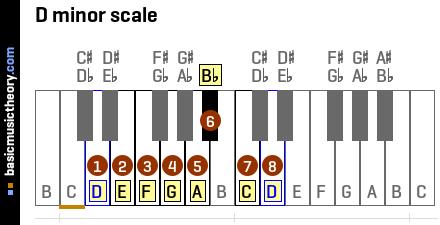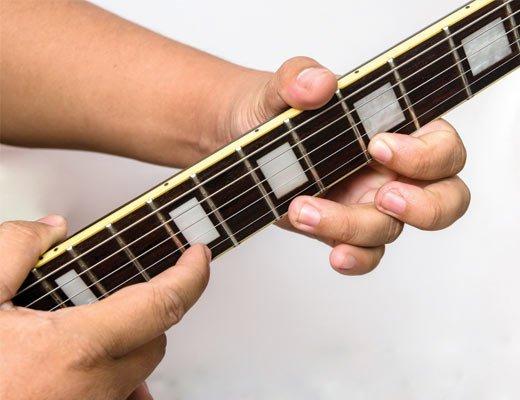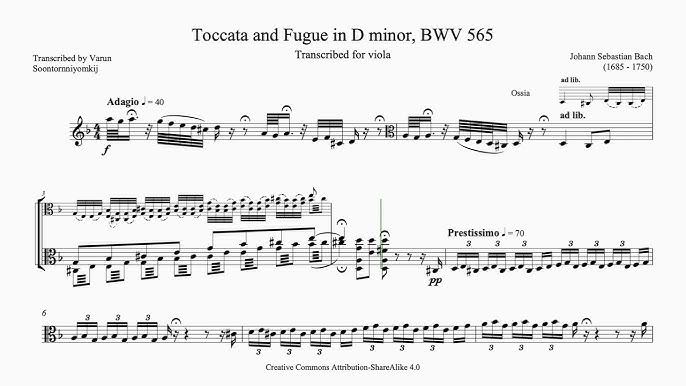Introduction to the D Minor Scale
Picture this: an audience, spellbound, as the mournful yet captivating tones of the D minor scale echo through the venue. It was during one such performance that I realized the profound impact and versatility of this scale in music.
Often described as the saddest of keys, the D minor scale transcends mere emotion, establishing itself as a crucial foundation in the world of guitar. But why, you might wonder, does it captivate musicians across genres, from classical maestros to modern rock virtuosos? The answer lies in its unique blend of mystery and depth, providing endless creative avenues for expression.
As an ardent admirer of guitar theory and an advocate for its transformative potential, I’ve dedicated myself to unraveling the mysteries of this natural minor scale. Join me as we explore how mastering the D minor scale can unlock new dimensions in your guitar playing, broadening your musical horizon with each strum and pick.
Why the D Minor Scale is Important for Guitarists

The D minor scale might just be your secret weapon for compelling guitar solos. Leveraging my extensive experience, I’ve found that understanding this scale can greatly enhance a guitarist’s ability to *improvise* and communicate through music. Why is the D minor scale so important? For starters, it is deeply rooted in *music theory* and is a staple in guitar scales, offering a rich emotional palette that resonates with both players and listeners.
As guitarists, we often seek that perfect balance between technical mastery and expressive freedom. The D minor scale provides just that, serving as a fundamental building block for more complex structures like the **minor pentatonic scale**. Mastering the D minor scale opens doors to a plethora of musical contexts, enabling you to craft solos that are not only technically sound but also emotionally evocative.
For any serious guitarist, delving into the D minor scale means unlocking a new level of artistry and engagement. It allows you to tap into a deeper well of creative expression, transforming your playing from mere notes into powerful musical narratives.
Where to Find the D Minor Scale on the Fretboard

Did you know that finding the D minor scale across the fretboard can unlock new creative possibilities? This revelation has been a game-changer in my journey as a guitar instructor, with years of experience helping students enhance their understanding of fretboard navigation. *Scale diagrams* have been invaluable in this endeavor, serving as visual maps that illuminate the vast landscape of notes available to us.
When tackling the D minor scale, it’s essential to recognize *fretboard positions* where the D natural minor notes reside. A fundamental position begins at the 5th fret on the A string, where the root note, D, beckons. As you gently navigate to the D note on the 10th fret of the E string, you’re building a bridge across the fretboard, noticing how each position segues into the next. *This interconnectedness not only improves fluidity during performances but also empowers creative expression.*
In my teaching sessions, I’ve observed how students’ faces light up as they connect these dots, transforming isolated notes into a cohesive scale that can traverse genres and styles. *It’s an enlightening moment that transforms theory into actual music-making potential, demonstrating the value of grasping these positions.* My goal is to share this empowerment with you, encouraging exploration and inspiration as we unravel the intricacies of the D minor scale. Let’s continue this exploration as we delve into how to play the scale with finesse and artistry.
How to Play the D Minor Scale on Guitar
D Minor Scale Notes

What if learning just seven notes could change your approach to music altogether? Understanding the D minor scale is not just about memorizing its sequence—it’s about unlocking a new realm of musical expressiveness. As I dove deep into the intricacies of music theory, I discovered that mastering the D natural minor notes—D, E, F, G, A, B♭, and C—not only enhances your ability to play this fundamental scale but also paves the way for exploring various musical modes. This foundation is essential when learning to deftly navigate the fretboard while ensuring each note resonates with the intended emotional depth.
Implementing this scale on the guitar bridges your skills to more complex compositions. Having dissected each note’s role, I realized how effectively these notes link to our understanding of other modes, like Dorian and Phrygian. The journey doesn’t end here—it sets the stage for exploring infinite creative possibilities. Let’s delve deeper into practical playing techniques and tips, further enriching our guitar mastery.
Playing Techniques and Tips

Are you employing the right techniques to elevate your play with the D minor scale? As we dive into the nuances of finger placements and guitar scales, you’ll discover how even slight adjustments can enhance your sound.
Drawing on my practical insights, I’ve found that effective finger placements can make the difference between an ordinary and extraordinary performance. When playing the D minor scale, ensure your hand is relaxed, allowing your fingers to move fluidly across the fretboard. This not only improves accuracy but also allows for smoother transitions between notes.
Start with a clear visualization of the scale pattern, and practice it until it becomes second nature. Experiment with alternate picking and hybrid picking for different textures. These techniques can provide your playing with a richer, more dynamic tone.
As we conclude our exploration of playing techniques, you’ll be well-prepared to uncover what you can create with the D minor scale, building on this foundation to express your unique musical voice.
What You Can Create with the D Minor Scale

Why limit yourself? The D minor scale can help you create melodies that resonate with deep emotion. As a guitarist, exploring this scale opens up a world of possibilities in melody construction and chord progressions that evoke a sense of poignancy and appeal. With its rich tonal qualities, the D minor scale allows you to craft themes that are both heart-wrenching and beautiful, perfect for those moments when you want to really connect with your audience.
From my own experience, I’ve found that immersing myself in the depths of this scale can transform a simple phrase into a powerful narrative. By understanding the nuances and structure, you can harness its potential to create harmonic layers in your music. Utilizing music theory not only helps in the technical aspect but also sparks creativity — think of this scale as a canvas where your artistic vision truly comes alive.
By integrating D minor into your music, you can cultivate an atmosphere rich with emotional landscapes. Whether you’re composing a sorrowful ballad or an introspective instrumental piece, the D minor scale offers the tools needed to express your innermost feelings effectively. Dive in, experiment, and let the emotive quality of D minor guide your musical journey. This scale is more than just a set of notes; it’s a gateway to crafting compositions that deeply resonate with both you and your listeners. Embrace its potential and watch your guitar work transform.
FAQs about the D Minor Scale
What is the D Minor Scale on the Guitar?
How Do You Play the D Minor Scale on Guitar?
What Are the Chords Associated with the D Minor Scale?
Why is the D Minor Scale Important to Learn?
What Techniques Can Enhance Playing the D Minor Scale?
Conclusion
Are you prepared to let the D minor scale be the gateway to your musical journey? Throughout this guide, we’ve explored the depths of the *D minor scale*, delving into essential *finger placements* and the various *guitar scales* it intertwines with. Understanding the theory behind this scale is crucial, yet it transcends mere knowledge. It’s about discovering the enchanting sounds it can produce and how it offers pathways to expressiveness on the guitar.
Reflecting on my own experience, I’ve come to realize that *mastering the D minor scale* is not merely a step on the path of musical proficiency—it’s a personal mission to unlock one’s unique musical voice. As you practice and experiment with this scale, you’ll uncover the raw emotion and creative potential it holds. Embrace the challenge, and allow the D minor scale to transform your playing, infusing your music with a compelling blend of melancholy and brilliance.

